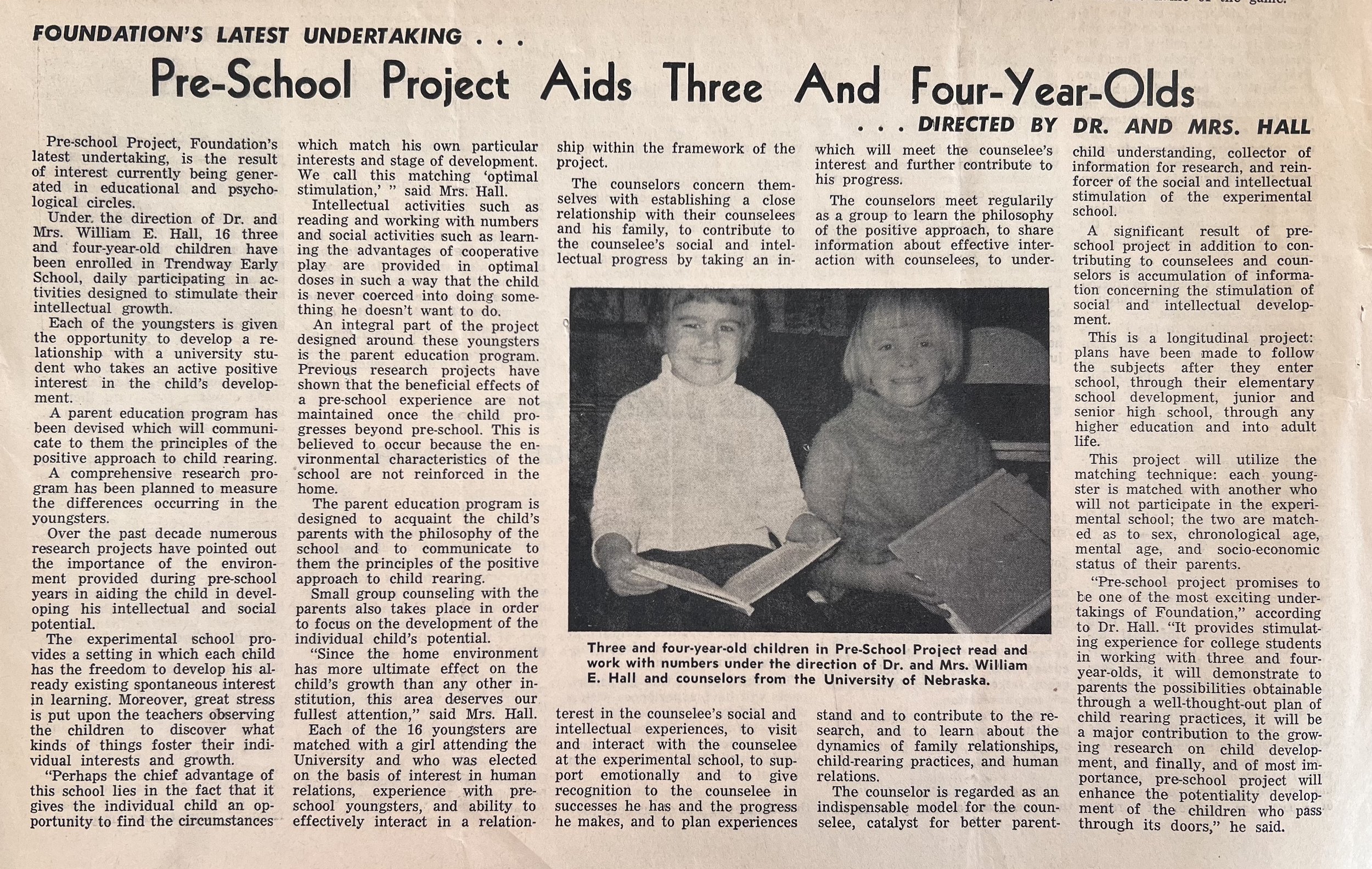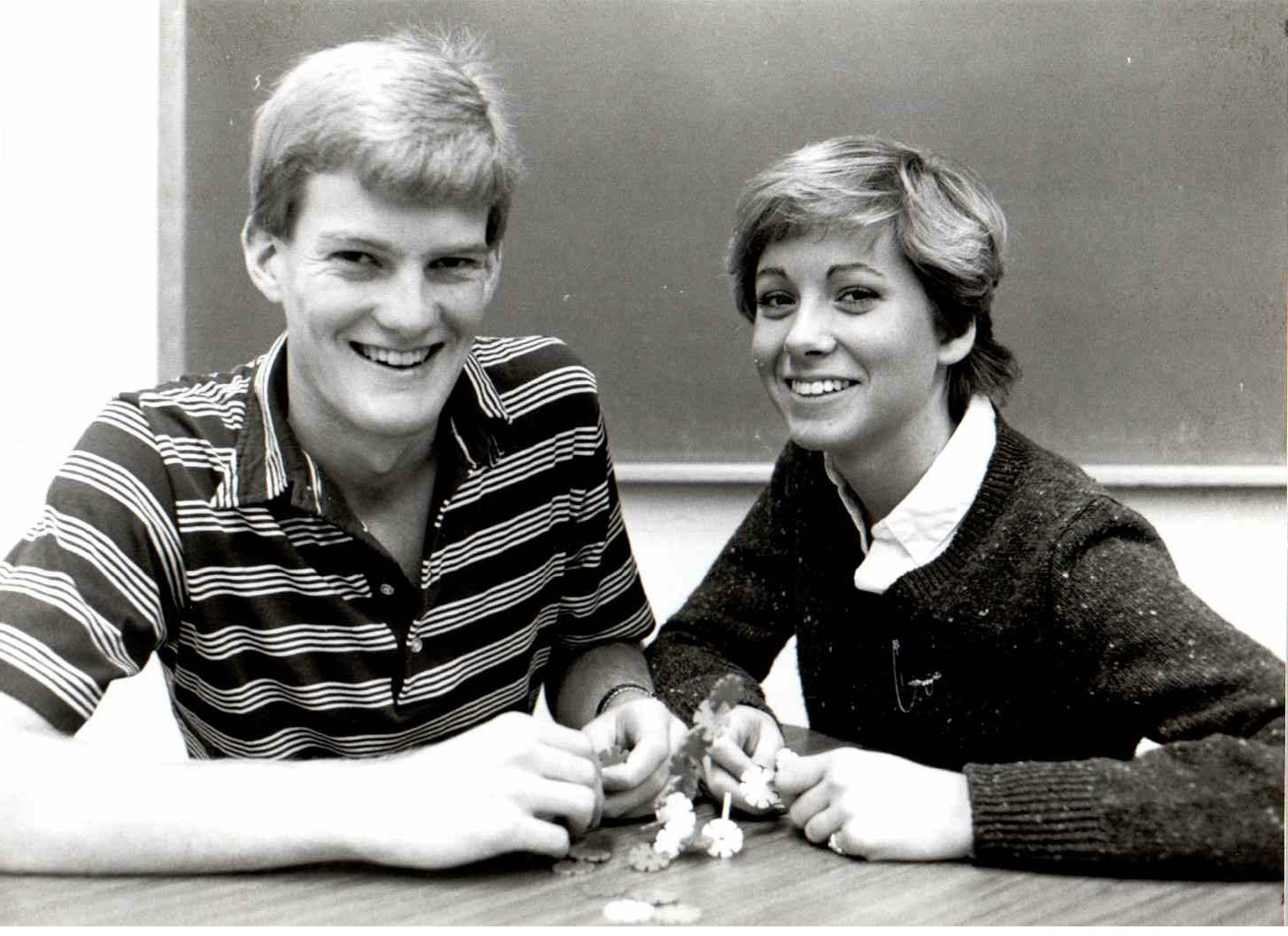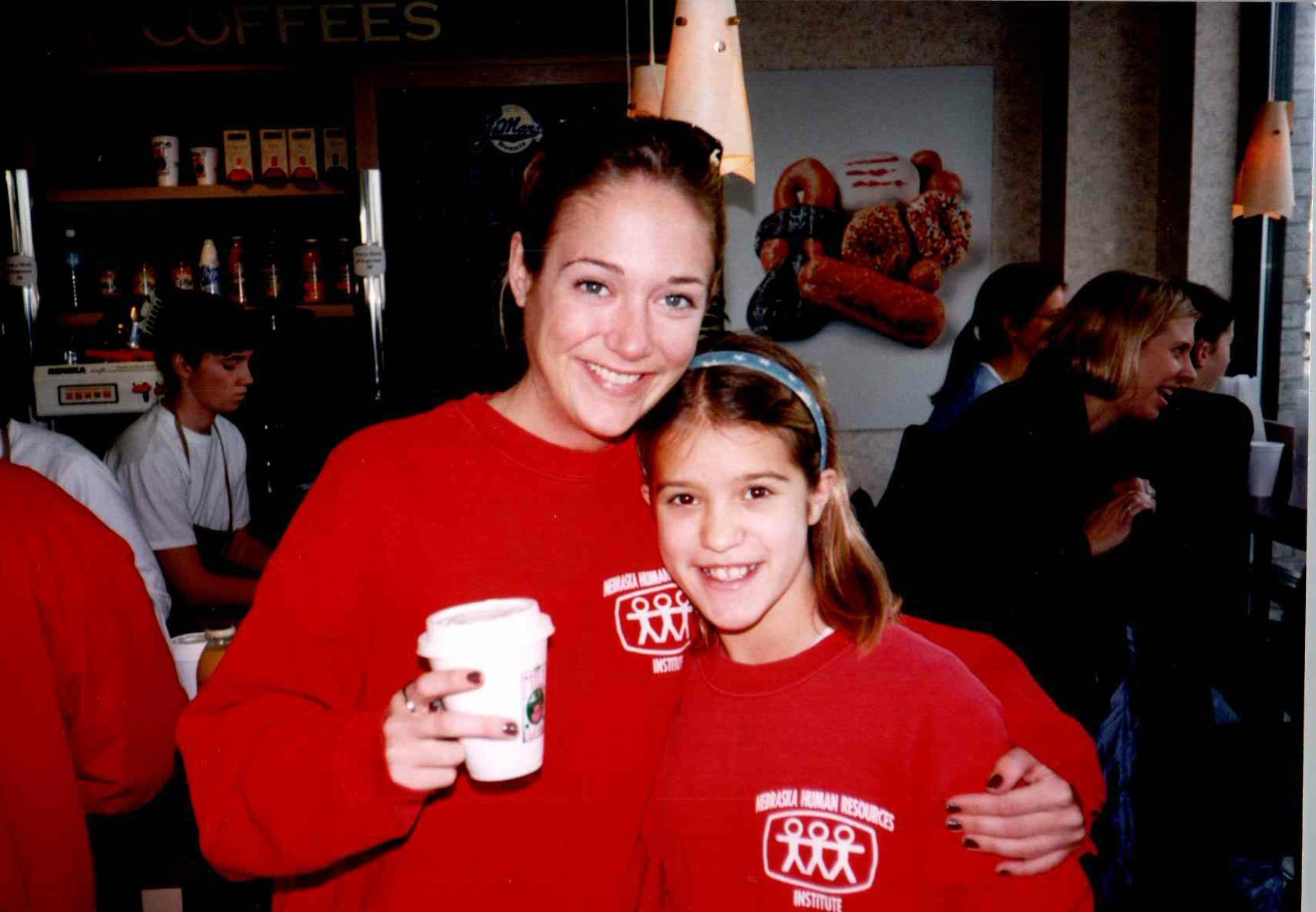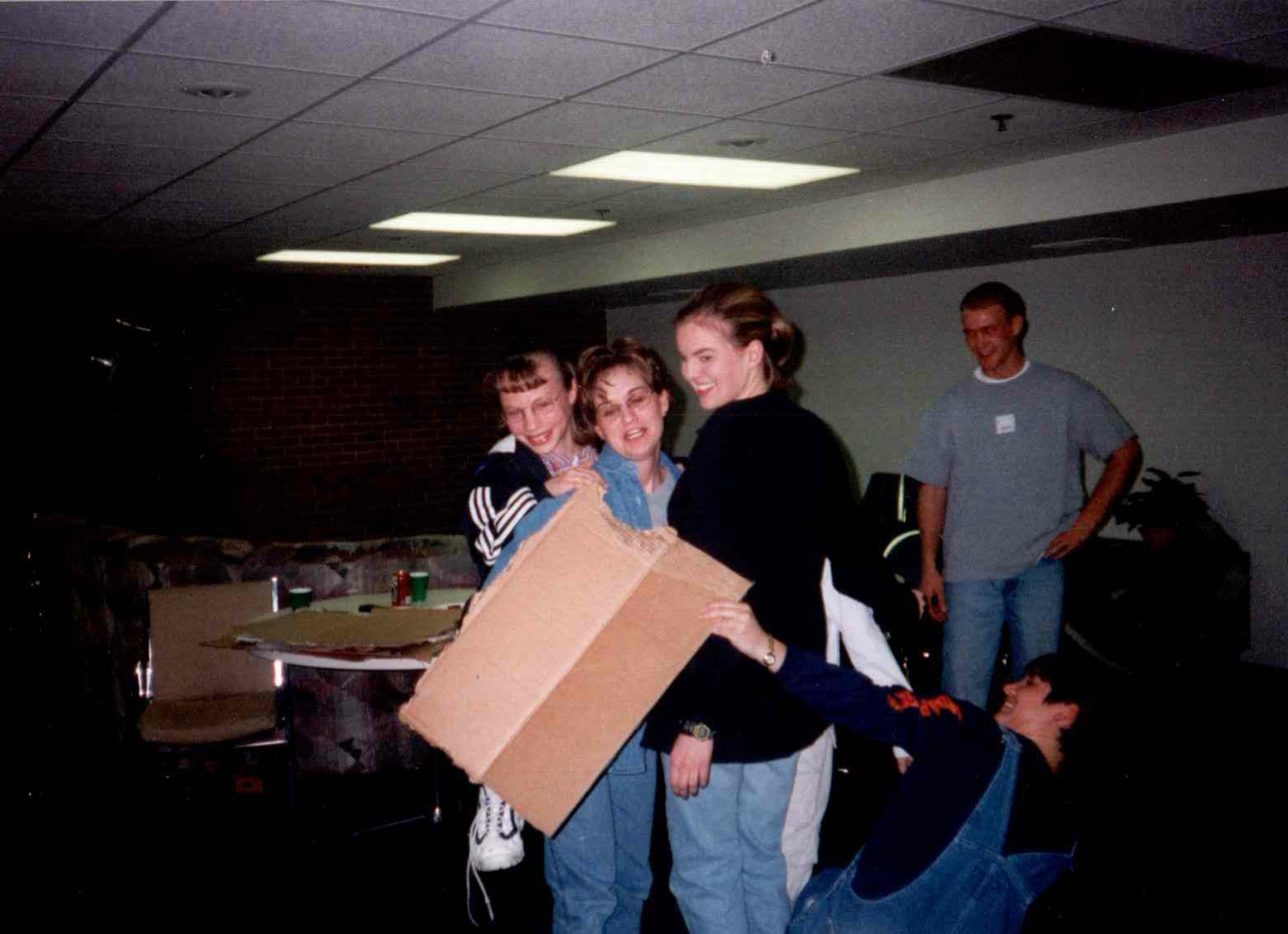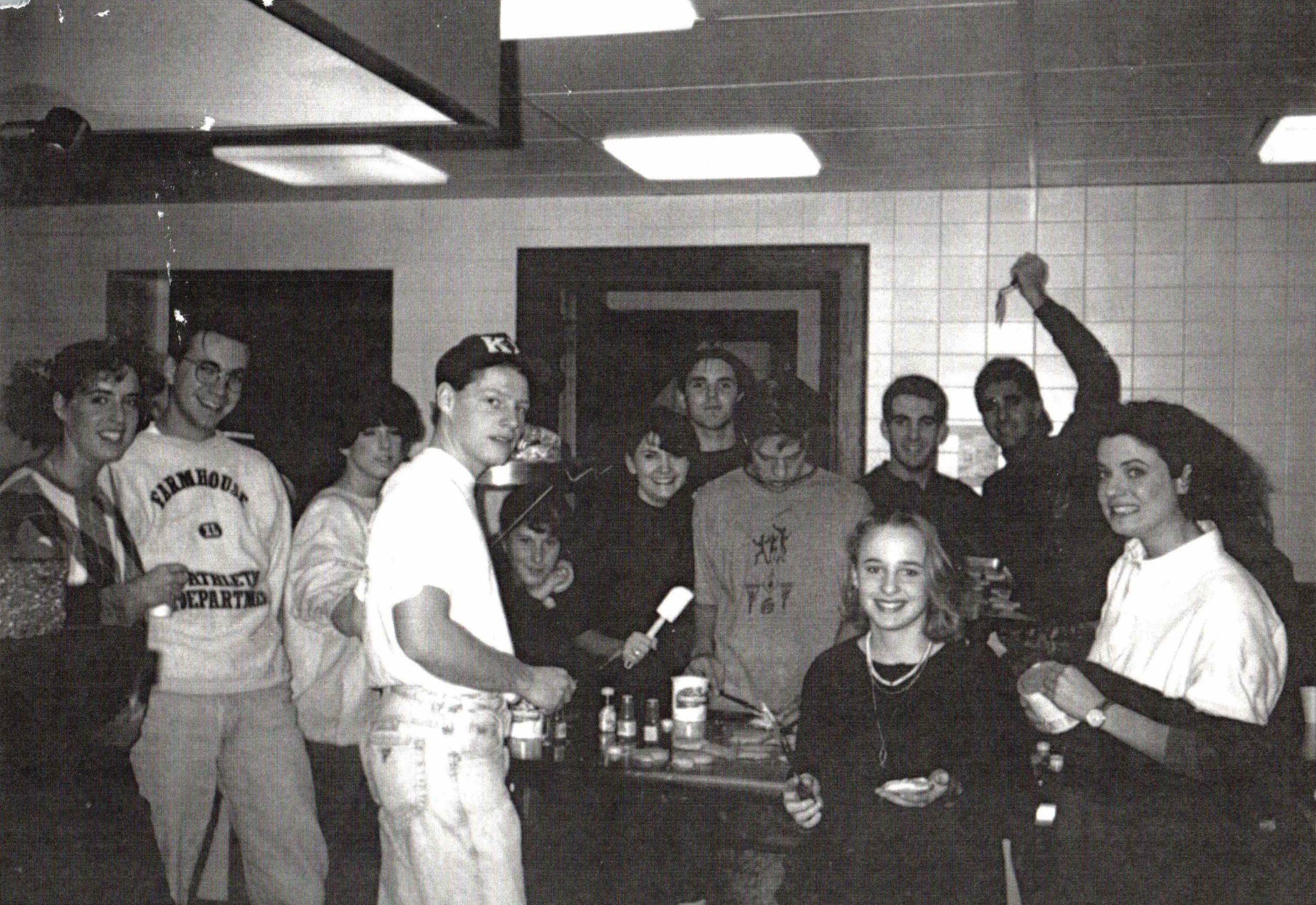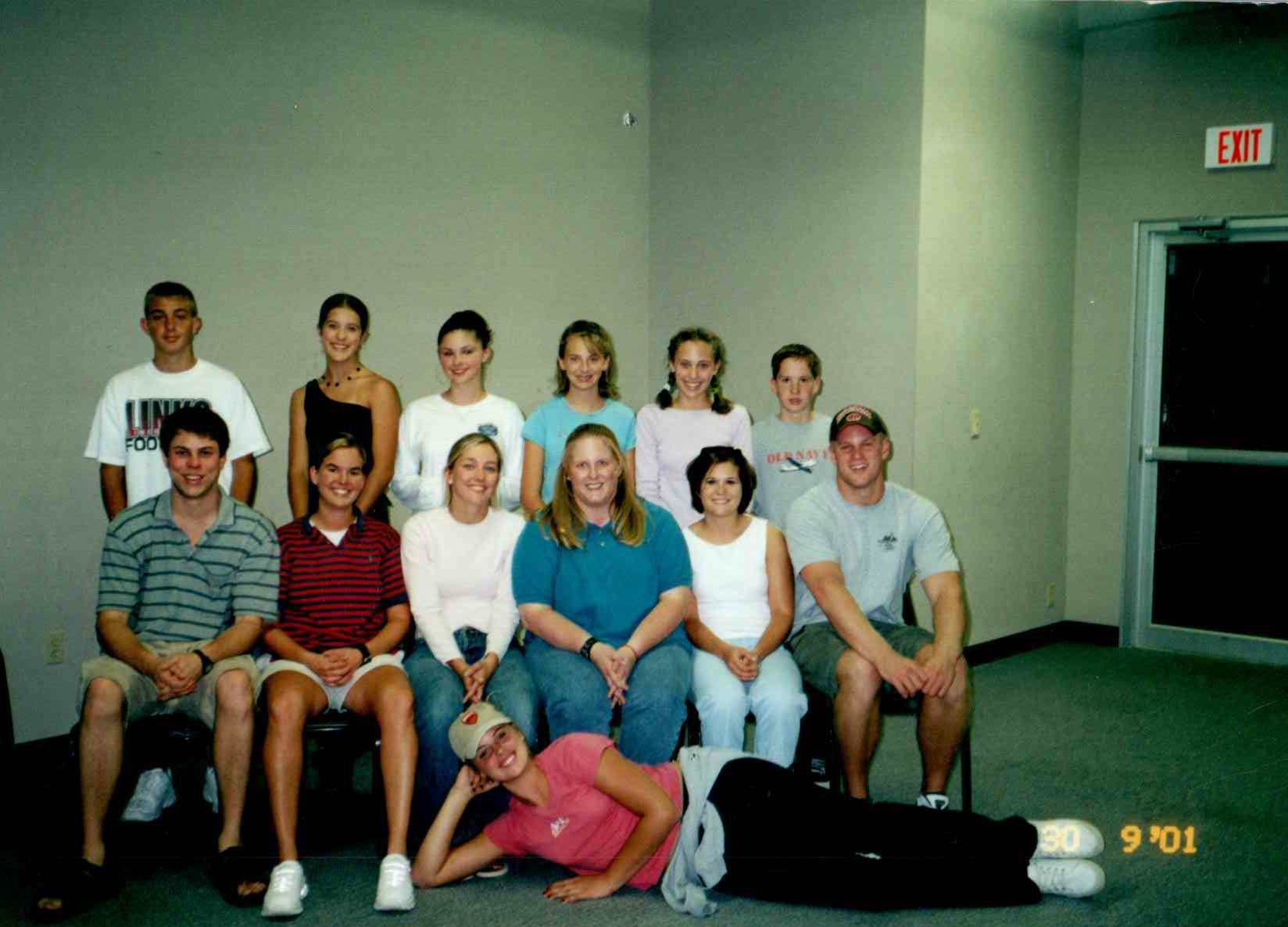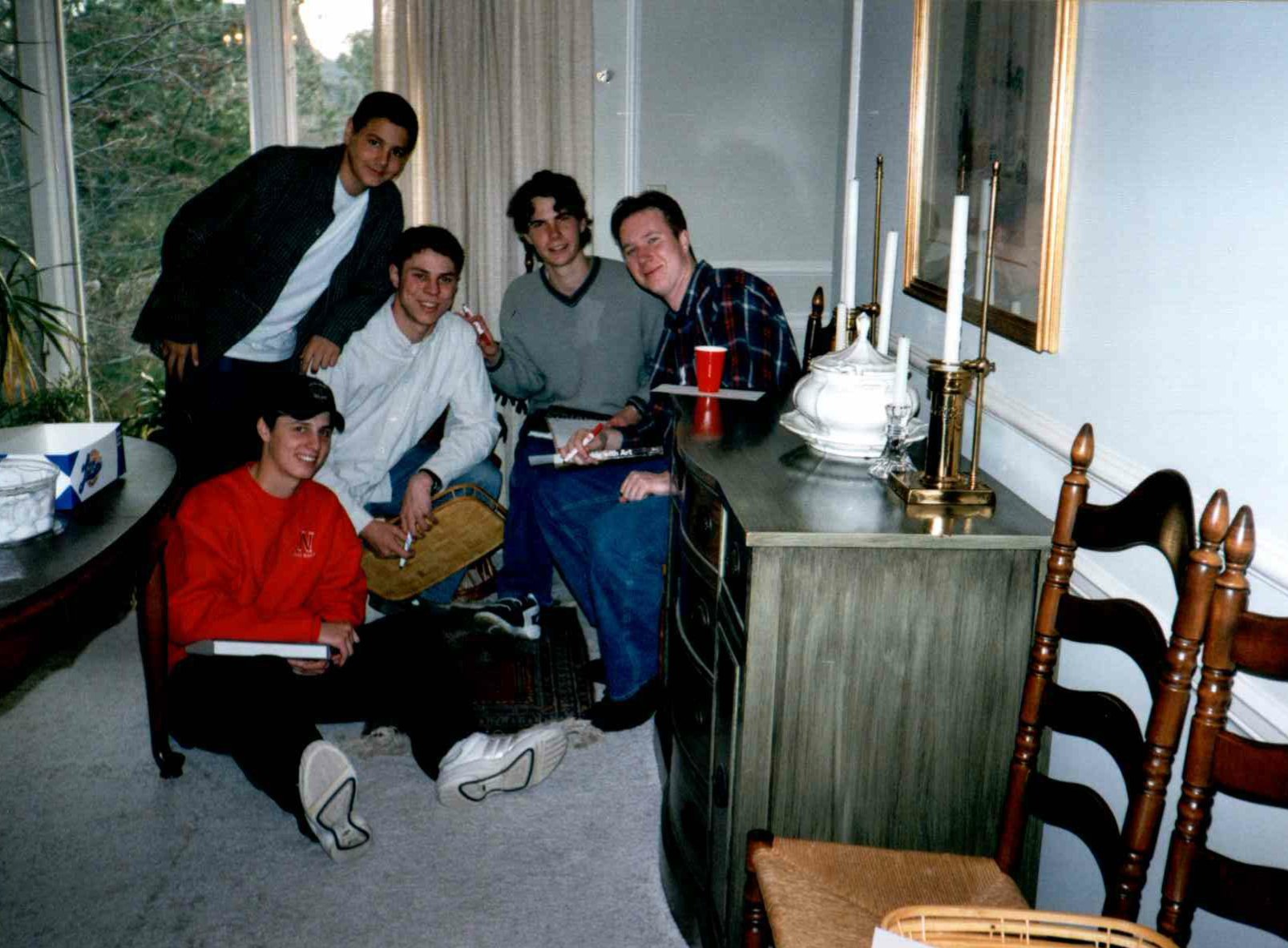Story 6 - Projects of the Past
One-on-one investment relationships have been the core of NHRI’s projects over the years. Mentors, formally called counselors, invest countless hours of precious time to help actualize the philosophy of NHRI. Each NHRI “Project” is designed to contribute to the research on “what man is capable of becoming.”
Very few programs can last over 75 years without evolving and NHRI is no different. Significant amounts of time have been invested into the one-on-one relationships and memories in each of these projects in our program’s history.
Over the last year, alumni and current students have shared their involvement and impact NHRI has had on their life. Through these stories, some have been involved in multiple projects, some remained in one project and a handful joined later in college and never formally joined a project. For some, the relationships formed within the project were just as meaningful, if not more, than those they had with their junior counselor or mentee, because of the significant time spent with this group. No matter what their individual experience was like, everyone concluded that it was always about “the people.” Below are a few of our “Projects of the Past.”
Each of the projects are laboratories of life and will continue to provide outlets for the constructive expression of human energy. As counselors continue to invest their time and talents in the process of maximizing human potentiality they begin to develop an ‘other-people-growth-oriented’ posture which permeates throughout all of their relationships. According to the counselors, the growth they experience is something that cannot be gained within the confines of the classroom alone. (Annual Report 1969-70)
Alumni Project
Founded in 1974 a group of alumni formed this project on the basis of common interests. The goals were to maintain contact with the Foundation, keep informed of project developments and reinforce the Foundation’s principles and philosophy.
Clifton Project
In 2003, the late Dr. Don Clifton, provided NHRI an opportunity to start a college-mentoring program for future teachers. The project's objective is to provide an opportunity for junior and senior undergraduates in teacher education to be a resource for freshman and sophomores who plan to enter teacher education. The long-term impact is to foster positive interpersonal relationships and communication skills for students in teacher education and in their future schools.
Child’s Project
Skills in human relations can be learned at an early age - as proved by the counselors in Child’s Project. Activities for children ages 5 - 8 years old were planned to try to bring out altruistic characteristics. Meetings with parents were often held to give them a chance to discuss their children’s progress.
Child’s Project at 2019 Fall Kick-Off
A sorority gift exchange at Christmas sparked an idea - members determined the gifts would bring more joy to children. Counselors and counselees within the Teenage Project, provided Christmas for families that would not be able to financially afford a tree, gifts and a meal.
Community Lincoln Project (Com-Linc)
This project served as an important part of the probation services offered by the Separate Juvenile Court of Lancaster County. Related with the University-Lincoln Project, this project involves citizens of Lincoln. Youth who are recommended for Com-Link are believed to benefit from having positive one-on-one relationships with college students. By serving as role models and mentors, counselors can make a lasting difference in the lives of these young people. In the fall of 1992, Com-Linc expanded and, because of the increase in numbers, became two separate groups: LIFT (new counselors) and Impact (returning counselors). By Spring of 1994, the two groups reintegrated into one group.
Concordia Project
Although strictly speaking not a project of the Foundation, the program at Concordia Teachers College in Seward, Nebraska received its initial impetus from the Foundation, is based on Foundation principles, and is directed by men who received their graduate training under Drs. Hall and Clifton. It is known as the Human Interaction Program for the Development of Teaching Potential. This program is designed to provide a number of in-depth, positive, inter-personal experiences during the four-year college experience. The effectiveness of this program was recognized in 1969 when its directors were given a Distinguished Achievement Award by the American Association of Colleges for Teacher Education. The project at Concordia is positive evidence of the ways in which the Foundation multiplies itself and extends its beneficial influence into the larger community.
Family Project
The underlying hypothesis of Family Project was that all children from any economical, social or cultural background have some type of positive potential in them. If this potential is found and strengthened, the entire life of the child may be changed. The people associated with the Family Project and the NHRRF found the best way to find and strengthen this potential through a one-to-one relationship with a person who has something to invest.
“Project meetings were something I looked forward to. We had great upperclassmen in our project, some of these were people that I looked up to. And so I just enjoyed the one on one times. I mean, those are just all great learning experiences. And so then you get to share that with someone younger in your project.”
Foundations Development Project (FDP)
Foundation Development Project started in 1973 as a Special Functions Project. In May of 1974, the general feeling was that it had evolved to include not only special activities, but also the entire Foundation. Therefore, the project changed its name to better reflect the scope of activities.
FDP continued to plan retreats, Senior Information Days and other special meetings and events, the largest being the Annual Meeting. It was also responsible for enhancing community awareness of the Nebraska Human Resources Research Foundation. The 1977-78 Annual Report, noted FDP has been called the “connecting link” of the Foundation. Although FDP no longer exists in the current NHRI project structure, the mission of FDP—fostering mentor-mentor connections across NHRI—lives on through today's mentors.
High School Equivalency Program (HEP)
In 1967, the Office of Economic Opportunity became aware of the work of the Nebraska Human Resources Research Foundation and encouraged the Foundation to submit a proposal to provide a GED program for migrant and seasonal farm worker youth who dropped out of high school. A proposal was submitted and, in 1968, the High School Equivalency Program (HEP) became a part of the Nebraska Human Resources Research Foundation.
The HEP of the NHRRF provided a unique educational opportunity for migrant and farm labor youth. This program was especially designed to provide an education of high school equivalency for young men and women between the ages of 17 and 22. The HEP students needed to meet special Office of Economic Opportunity (OEO) financial requirements, and be genuinely interested in obtaining their high school education.
“People develop a positive self-image by experiencing successes.”
International Project/International Students Cooperation Project (ISCP)
In the fall of 1997, through a grant by the Woods Charitable Trust, the project brought together American and international college students, pairing them in one-to-one relationships which encourage and foster a deeper understanding of people from different cultures. This project was developed in response to a growing need for multiculturalism in Lincoln. (Annual Report 1997-98)
Junior Project
A continuation of the Child’s Project, Junior Project was an essential part of studying the potentially successful children as they progressed through the normal educational experiences.
Lakeview Project
Lakeview Leadership Project which began 1973, at the request of the Lincoln School Board. This project was based upon building positive peer and teaching relationships throughout Lakeview Elementary School.
With 12 selected leaders, two from each grade level, the process of matching counselors with counselees began. Counselees were selected by their peers and teachers on the basis of being the leaders and some of the friendliest children in the school. Since the project focused primarily upon increasing positive relationships within the school, it was assumed that those children who were selected as being the leaders and most positive were the best facilitators in increasing the interaction index of the school in a positive direction. In Lakeview, the assumption was being proved that when counselors invested time in their counselees and built strong relationships there was a marked increase in the positive relationships which caused a "ripple effect", creating a friendlier atmosphere throughout the school.
Lakeview Birthday Party, 1980’s
Lakeview Project members, 1991
Language Enhancement Program for Mexican-American Children (LEMAC)
In 1974, a pre-school was funded jointly by the Lincoln and Woods Foundation. This program was for three to four year old Mexican American children to develop a positive self-image and at the same time strengthen their cultural identity through a language enhancement program.
Leadership Development Project (LDP)
In 1977, the Leadership Development Project (LDP) was initiated at Lincoln High School to attempt to combat the high drop-out rate which existed at the time. LDP’s main emphasis is on making a difference at Lincoln High.
Lux Project
Between 2008 and 2013, NHRI started two new projects: the Lux/East Project and Park Project. Graduates of Priceless Preteen who later attended Lux Middle School approached NHRI about continuing their leadership development work beyond Priceless Preteen. NHRI staff then decided to pair these students with leadership mentors and start the Lux/East Project in the fall of 2009. With the continued growth of NHRI, Lux Middle School and Lincoln East High School became two separate projects in 2015. Lux Project became part of the JP South project in 2021.
Nebraska School of the Visually Handicapped (N.S.V.H.)/Visually Impaired Project(V.I.P.)
The Nebraska School for the Visually Handicapped Project (N.S.V.H.) was formed in 1975. The idea for this project grew out of a Teenage project retreat which was planned and organized with the NSVH students at Nebraska City. This cooperative program, between the N.S.V.H. and the Foundation, is designed to increase verbal and social skills of visually impaired children. Activities center on individual areas of interests and strengths to help these students grow and mature mentally, socially, and emotionally.
The 1985-86 Annual Report announced the change in this project name from N.S.V.H. to V.I.P. This change was made because most of the counselees were enrolled into the Lincoln Public Schools.
V.I.P. replaced the original name of N.S.V.H. due to the fact that most of our counselees were mainstreamed into the Lincoln Public Schools, the N.S.V.H. no longer applied. The name V.I.P. had a double meaning: Visually Impaired Project and Very Important People! (Annual Report 1985-86)
Nebraska Youth Development Project
In 1963, the Foundation initiated a volunteer counselor program for boys and probation in cooperation with the Separate Juvenile Court of Lancaster County. The goal of the counselor was to facilitate a change in the counselee’s inappropriate behavior in a positive direction.
Model Project
Model Project, was an expansion and continuation of Com-Link under the co-operative supervision of the Nebraska Human Resources Research Foundation and the Separate Juvenile Court of Lancaster County, was an effective program for juvenile offenders through the utilization of volunteer court counselors., Model Project worked with juveniles in three counties: Lancaster, Seward and Saunders. The volunteers used the Foundation's philosophy of building a one-to-one relationship to make a positive change in the counselee's behavior. The volunteers were contacted weekly by the project director who served as a sounding board and offered guidance in building the relationship. These contacts kept the court up-to-date concerning the effectiveness of the relationship. The Model Project Volunteer Program placed responsibility on every citizen to help young people who were having difficulty and thus built a better community. (1970-71 Annual Report)
“Work by the members of the Lincoln Citizenship Project in Lincoln’s Orthopedic Hospital has been carried on for some time. But only this year has a definite program for orthopedic research been developed.”
According to Dr. Donald Clifton, the purpose of Orthopedic Project was to develop relationships with children at the hospital and through these relationships, enable these patients to build other friendships and to help them see some contribution they can make in the future. Source: Projections, May 1961. Patients at the hospital were counselees, most were children and young adults who were from the state of Nebraska. In addition to the weekly one-on-one visits with their Project Pals, there were several special activities for the boys and girls in the hospital.
Although the hospital admitted and treated 1,587 patients in the 1970-1971 biennium, the 1971 Legislature decided to accept the recommendation of a 1968 study which said the hospital should be closed. The hospital closed October 1, 1971. Under the direction of Gary Sherman, NHRI staff advisor, efforts were made to make Park Elementary School the new home of the project.
Potentiality Development Project
Founded in 1965, the Potentiality Development Project (PDP) began as a pilot program to help capable students at Lincoln High School graduate and obtain a college degree. PDP directed itself toward encouraging positive development in the counselees by using the one-to-one approach. The project worked with the concept that the beliefs a person has about oneself are greatly influenced by the type of feedback he/she receives from others. From this concept came the hypothesis that successful college students can have a positive influence on the lives of high school students who have sufficient academic promise to be successful in college, but who come from families in which neither parent has graduated from college.
Pre-School Project
Established in 1957, this project designed optimal early learning conditions for the social and intellectual development for three to four year olds.
Project Life
In the early summer of 1972 the Lincoln Housing Authority (LHA) in conjunction with the Adult Basic Education Division of the Lincoln Technical College requested NHRI to assist in the planning and implementing of an educational program for low-income LHA tenants. The Lincoln Housing Authority had recently been funded under what was called the 'Turnkey Project' to build 120 new homes throughout the City of Lincoln, Nebraska. Many low-income tenants would then have the opportunity of moving into the new Turnkey homes. The Project Life training program consisted of a series of four six-week sessions, spanning over a ten month period of time. NHRRF did much of the initial planning and advising in designing the Project Life program.
Project Life was a pioneering adventure for those whose minds it was conceived from. No other such program had been successful in Lincoln, Nebraska. No other 'Project Life precedent' had been established. However, the one item that was focused upon continually was seeing the participants as a human being. In other words, each participant was recognized as any other human being with a certain set of needs and desires. This was probably the single-most important reason for the success of Project Life.
Project Lincoln
Each year several of the graduates from the HEP Program expressed a desire to stay in the Lincoln area to work or continue their education. In the past this had been difficult because of the financial strain of starting out on their own. Project Lincoln was set up as an extension of the HEP Program to help these young people establish themselves in the Lincoln community.
Project Lincoln supplied housing to the students for three months with a possible extension of three more months if needed. There was also a live-in coordinator in each apartment to help the student budget money, figure out transportation, and work on living arrangements when they move out of Project Lincoln. The students were responsible for utilities, food, phone, transportation and personal items. Only the rent is paid by Project Lincoln, but this was a large part of initial expenses. Annual Report 1971-72
Roper Project
Designed to build positive peer and teacher relationships throughout Roper Elementary School. The project was composed of one boy and one girl from each grade. The mission of the project was to “make a difference” at school.
NHRI Project members at Roper Elementary
Rope-View Project
Project members within the Lakeview project elected to change the name to “Rope-View” as most junior counselors who had formerly attended Lakeview Elementary switched to attend Roper. 95-96 Annual Report
Special Functions Project
A laboratory project that started as a public relations arm of the Foundation. This project provided opportunities for positive interaction with others. Annual meetings, creating newsletters, planning retreats, and other additional activities that sharpen exciting talents and skills in organization and implementation.
The Special Functions Projects originated the senior information days for the University. They assisted in providing orientation to college for high school seniors from across Nebraska. These became jointly sponsored with the Nebraska Office of Admissions. Read more about College Days in our Story 52.













